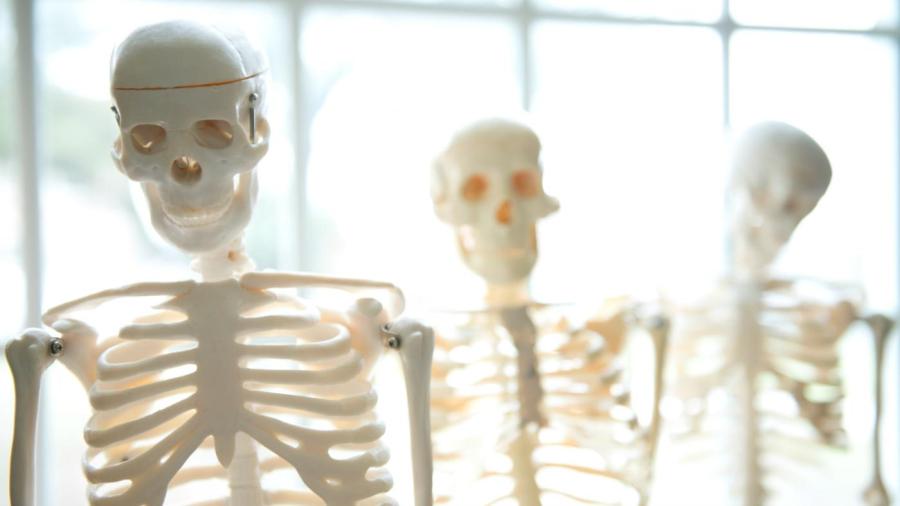What Are the Functions of the Human Skeleton?

According to IvyRose Holistic, the human skeleton supports soft tissues and muscles, protects internal organs from injury, assists in movement, stores minerals, produces blood cells and stores chemical energy. The rib cage is the part of the skeleton that protects the lungs and heart, while the vertebrae and cranium protect the spinal cord and the brain respectively. Phosphorus and calcium are the main minerals within the human skeleton.
The human skeleton gives the body its shape, determines the height of an individual and the size of body parts, such as feet and hands. The cavities of the skeleton hold internal organs and ensure they are kept within their positions. Contraction of skeletal muscles causes movement. The red marrow of skeletal bones produces about 2.5 million red blood cells per second. The human skeleton creates a balance of the minerals responsible for metabolism and nerve transmission. IvyRose Holistic notes that the human skeleton stores fats within its yellow marrow and therefore acts as an energy reservoir. Twenty percent of human weight is carried by the skeleton, including ligaments, tendons and cartilage. Skeletal bones are made of connective tissue. The bones of the human skeleton are classified into long, short, irregular, flat, sesamoid and sutural bones, depending on their shape and length.





